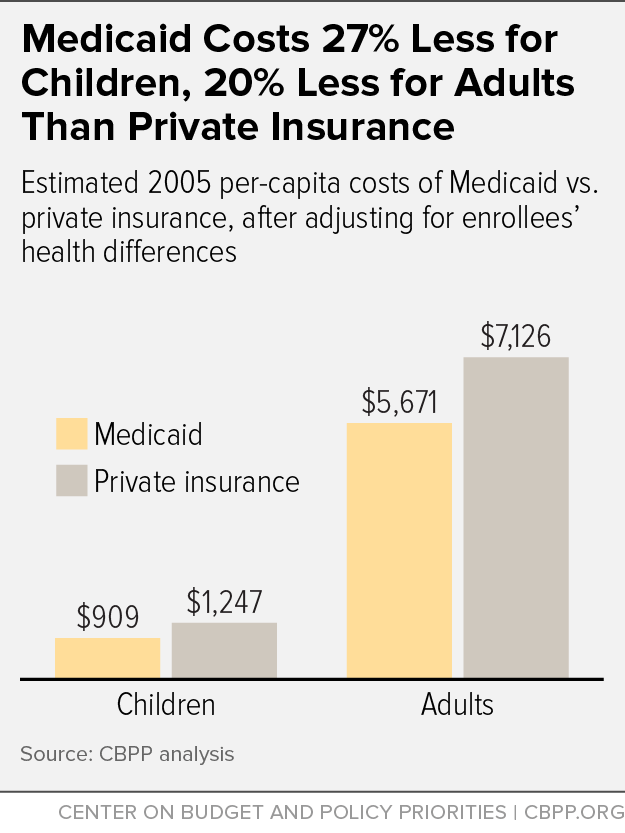BEYOND THE NUMBERS
As states consider whether to adopt health reform’s Medicaid expansion and some federal policymakers promote radical structural changes to the program, such as converting it to a block grant or imposing a cap on federal funding, they should understand some vital facts about it.
Here are three:
-
Medicaid’s costs per beneficiary are substantially lower and have been growing more slowly than for private insurance. Medicaid’s not an inefficient program and its costs aren’t growing out of control, contrary to some claims.
Medicaid provides more comprehensive benefits than private insurance at significantly lower out-of-pocket cost to beneficiaries, but its lower payment rates to health care providers and lower administrative costs make the program very efficient. In fact, it costs Medicaid much less than private insurance to cover people of similar health status (see chart).
-
Medicaid has helped make millions of Americans healthier by improving access to preventive and primary care and by protecting against (and providing care for) serious diseases.
Compared with similar people without coverage, people with Medicaid were 40 percent less likely to have suffered a decline in their health in the previous six months, a landmark study of Oregon’s Medicaid program found. Medicaid enrollees were also likelier to use preventive care (such as cholesterol screenings), to have a regular office or clinic where they could receive primary care, and to receive diagnosis of and treatment for depression and diabetes.
Access to health care is significantly better among non-elderly adult Medicaid beneficiaries than among the uninsured, the Medicaid and CHIP [Children’s Health Insurance Program] Payment Access Commission has found. Some 88 percent of non-elderly adult Medicaid beneficiaries have a regular source of care, more than twice the figure for non-elderly adults without coverage.
Moreover, Urban Institute researchers have found that Medicaid provides beneficiaries with access to health care services that is comparable to — but less costly than — what they would receive through employer-sponsored insurance.
-
Medicaid participation is quite high, particularly among children in states that have simplified and streamlined their enrollment processes. Some 65.6 percent of low-income adults with children who are eligible for Medicaid are enrolled, according to the Urban Institute. That’s a relatively strong participation rate compared to some other programs. In addition, 87.2 percent of eligible children participate in Medicaid or CHIP, according to the Urban Institute.
Evidence so far among states adopting the Medicaid expansion shows substantial increases in overall Medicaid enrollment, which indicates robust participation among expansion-eligible individuals.
As Medicaid turns 50, learn more about how it improves access to health care, its long-term benefits, and why states should expand Medicaid: www.cbpp.org/medicaid-at-50

